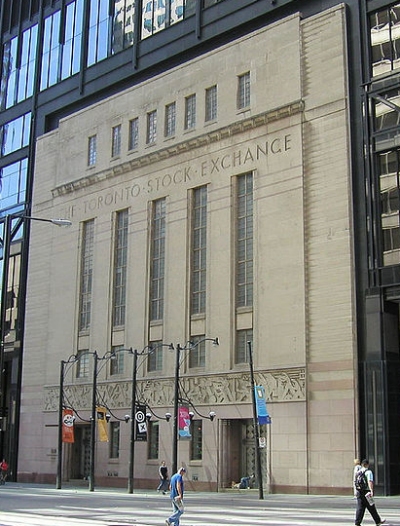From humble beginnings, the Toronto Stock Exchange (“TSX” or “the Exchange”) has expanded significantly and is currently the largest stock exchange in Canada and the seventh-largest across the globe (based on total market capitalization). In North America, TSX ranks third and is only surpassed by the two largest and best-known exchanges in the world – the New York Stock Exchange (NYSE) and NASDAQ. Today, virtually all financial professionals in Canada – from traders in Vancouver to insurance brokers in Toronto – have to be cognizant of the daily fluctuations which occur on the TSX.
TSX expanded through various acquisition and realignment plans, the majority of which were initiated after 1998. Today, TSX is a subsidiary of TMX Group (“TMX”), which owns and operates a variety of exchanges including TSX, TSX Venture Exchange, Montreal Exchange, Natural Gas Exchange and Boston Options Exchange, among others.
History
Pre-World War I

In 1913, the Exchange introduced the first version of the “ticker tape” that provided trading prices and bid-ask quotations. As WWI brought financial panic in 1914, all trading activity was halted at the Exchange for three months.
The Next 75 Years
After WWI, corporate profits increased and boosted the stock market. In the early 1920s, over $700 million worth of securities were issued. By the end of the 1920s, over 10 million shares traded annually.
In the mid-1930s, the Exchange merged with a competitor and soon became the third-largest exchange in North America. By the mid-1950s, trading exceeded 1 billion shares. In 1958, TSX required listed companies to disclose changes in their affairs that could impact share prices. In 1977, the Exchanged launched the first Computer Assisted Training System and created the TSE 300 Composite Index® (“the Index”). By 1980, volumes reached 3.3 billion, accounting for close to 80% of all Canadian activity. In 1983, the Exchange was relocated to 130 King Street West, its present location. In the year of the market crash, 1987, trading exceeded $100 billion.
Recent Developments
In 1996, TSX introduced decimal trading – the first North American exchange to do so. It wasn’t until August 2000, that the NYSE began trading in decimals and even then it was only 7 stocks. In September they expanded it to 57 companies.
In 1997, the TSX Exchange created an electronic trading environment. Through a realignment plan with the other Canadian exchanges in 1999, TSX became the sole Canadian exchange to trade senior equities. In March 2000, over $100 billion worth of trades were executed. Also in 2000, the Exchange became a for-profit entity.
In 2001, TSX acquired the Canadian Venture Exchange (renamed TSX Venture Exchange in 2002), which caters to junior equities. In 2002, a branding change occurred – from TSE to TSX. During the year, the Index was renamed the S&P/TSX Composite Index, with S&P taking over its management. In 2005, trading exceeded $1 trillion, setting a new record.
With the financial crisis in 2008, TSX provided temporary relief measures around listing requirements to assist impacted companies. The Exchange reported total new financings of around $50 billion in 2009, as it continues to play an increasingly important role in equity financing for mining and cleantech companies.
In 2011, TMX considered merging with the London Stock Exchange, however, these plans were terminated. Instead, TMX accepted a bid from Maple Group, and the acquisition was completed in August 2012 in a deal worth $3.8 billion. With around 4,000 listed companies worth close to $4.5 trillion in total market capitalization, TSX and TSX Venture Exchange are significant players in the global capital markets.
See Also:
- How the Golden Reset Button Could Drive the Price of Gold to $20,000.
- Investing in a Mutual Fund
- Three cheers for the Dow
- NYSE Rate of Change (ROC)©
- The Coming Water Wars
Recommended by Amazon:
- Go Canada: The Coming Boom in the Toronto Stock Market & How to Profit From It
- Exchange-Traded Funds For Dummies
- Dividend Stocks For Dummies
- Fundamental Analysis For Dummies
References:
Jeremy Woodward is a freelance blogger and author based in Canada who focuses primarily on finance, insurance, global economic trends and other related matters.
Photo Credits: Fabian Fischer
